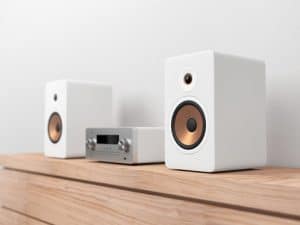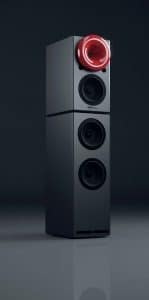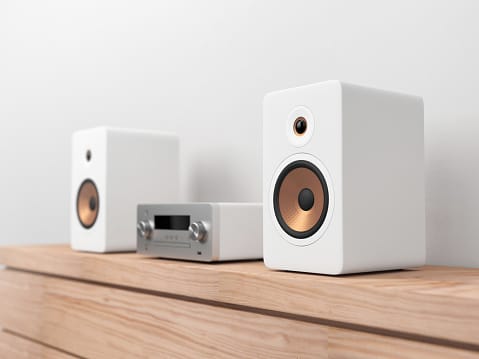The correct power amp for your live PA system combines the right wattage with the right features. Does that sound easy? There are many factors to analyze before purchasing the best amplifier.
Here are 3 important things you need to consider
- Impedance
- Power
- Sensitivity
For your convenience, we created this how-to choose amplifier for speakers guide to help you through all the things to consider when choosing the suitable amplifier for your needs.
Read on to find out more about what should the ideal amplifier have.
How To Choose Amplifier For Home Speakers

Any audio system would not be complete without a speaker system. The amplifier converts the signals from the source into a form that the speakers can understand. In order to be sent to the speaker, the signal is boosted or amplified by the amplifier.
When purchasing an amplifier for your speaker system, you should consider many factors. The essential element in obtaining sufficient volume and good sound quality is how much power you need. Other factors include impedance, sound quality, sensitivity, price, and features.
Impedance
Both specs and amplifiers include impedance on their spec sheets, but what does that mean? It’s a measurement of how much electrical resistance your components exhibit, measured in ohms.
It is usually represented by the number 10. You will clearly understand what resistance is if you have experience with electronics, but in-depth knowledge is not required for our (somewhat simplified) purposes.
We will use impedance to determine your amplifier and speakers’ compatibility.
It’s all about ohms
On the other hand, speakers typically have ohm ratings between 4 and 8. Generally, amplifiers work best within a specific range, ranging between 6 and 12 ohms.
You can find out if your amp and speakers are compatible by looking at their specifications. When you purchase your products, you can find this information on the spec sheet or online if you’ve misplaced your original documentation.
The Bottom Line
In general, we recommend connecting speakers with higher impedances to amplifiers capable of managing lower impedances.
However, it would help if you didn’t connect speakers with low impedances (for instance, 4 ohms) to amplifiers with higher minimum impedances.
It will almost always ensure a safe speaker and amplifier pairing, and it takes most of the complicated math out of the equation.
In addition, many modern speakers and amplifiers have also adopted ohm rating compatibility, which simplifies things for everyone.
Power

So, let’s look at power, but be aware – things are about to get complicated.
Watts are measured in HiFi and home cinema equipment like any electrical item. It is common to believe that higher wattage means higher volume output, but that’s not always the case.
Wattage in speakers and amplifiers refers to the amount of power they can handle. Before, people often used a low-watt amp with a high-watt speaker and called it a day. It wasn’t the best match. To get there, we need to wade through much HiFi jargon.
Continuous Power
It is common for amplifier specs to refer to Continuous Power (occasionally called Continuous Power Output or Continuous RMS Power) and Dynamic Power (or Peak Power). In our case, we will pay more attention to Continuous Power since it indicates how strong an amplifier is under normal circumstances.
Essentially, Continuous Power delivers a set amount of power to a fixed number of ohms, such as 50 watts per channel into 4 and 8 ohms.
Dynamic Power
In contrast, Dynamic Power could generate 100 watts and 150 watts respectively through 8 ohms and 4 ohms. Quite simply,
Dynamic Power is designed to make sure the wide dynamics needed by modern digital music and movie formats are handled appropriately when the need arises.
Although this power is only utilized for milliseconds, it is not a reliable indicator of the general amplifier power.
Manufacturers display various ways of communicating amplification (wattage) levels for speakers.
In the Q Acoustics product line, we recommend amplification between 25 and 150w for floor standing speakers such as the 2050i. In comparison, other manufacturers may indicate the ratings for the minimum suggested power, the maximum continuous power, and the maximum short-term peak power for your speakers.
The bottom line
Compare your amplifier’s Continuous Power and wattage to your speaker’s recommended amplification level. A comparison of these two figures will help you determine the suitability of your pairing.
Sensitivity
It is just for speakers, and rather than wattage, it is how loud a speaker will be in decibels when you place it 1 meter away and power it with 1 watt.
For example, we used Q Acoustics’ 2050i floor standing speakers to illustrate our section on ‘power.’ These speakers have a 92dB sensitivity rating.
So, 92dB would be the sound pressure level produced by the 2050i’s using just one watt of power (way less than any amplifier).
What is the importance of sensitivity?
It has a direct effect on how loud your speakers can go. As long as the distance from the speaker and the power applied is the same, a speaker with a lower sensitivity will sound quieter than one with higher sensitivity.
Higher sensitivity is not necessarily better; it means that a speaker with higher sensitivity will reach higher volumes and perhaps save you from purchasing a more powerful amplifier.
Would you ever wonder why amplifiers offer more than 1 watt if that’s all it takes to reach 92dB from one meter away when using speakers like 2050i’s? So amplifiers need to double their power output to raise a speaker’s sound pressure level by 3dB.
According to our example above, it would take 2 watts for the 2050i’s to reach 95dB, 4 watts to reach 98dB, 8 watts to reach 102dB, 16 watts to reach 105dB, and so on until your eardrums can’t handle it anymore.
You will notice a rapid drop in volume as you get farther away from your speakers. Whenever you double the distance between your speakers, you will see a 6dB falloff. A person sitting 4 meters from their speakers would lose 18 dB of volume, requiring a much more powerful amplifier to restore the volume to its desired level.
The bottom line
For your amplifier to effectively drive your speakers, you must ensure that they have a high enough sensitivity. Perform the basic math above, and you’ll get an indication of whether they’re meant to be together based on the listed sensitivity of your speakers.
How To Choose Amplifier For Speakers FAQs
Can an amplifier be too powerful for speakers?
There are times when amplifiers are too powerful for speakers. Speakers are limited by the amount of electrical energy they can convert into sound. In general, if the amplifier produces more electrical power than the speakers can handle, it may lead to distortion or clipping, but it is unlikely to cause permanent damage.
How many watts do I need for my car speakers?
The average homeowner is satisfied with 20 watts. It is possible to use a car speaker of 50 watts or 100 watts for larger gatherings. Cannot use Speakers with such high power at home.
Should speaker wattage be higher than amp?
Generally, we recommend around twice the amplifier power of the speakers. As an example, a 200-watt speaker would require a 400-watt amp. You want enough clean energy to handle anything you throw at the amp without clipping.
Conclusion
There are a lot of people asking How to choose amplifiers for speakers? This article aims to help readers find the best amplifiers to suit their needs.
This article discussed the factors to consider when picking an amplifier for speakers. We have discussed factors such as power, impedance, and sensitivity.


